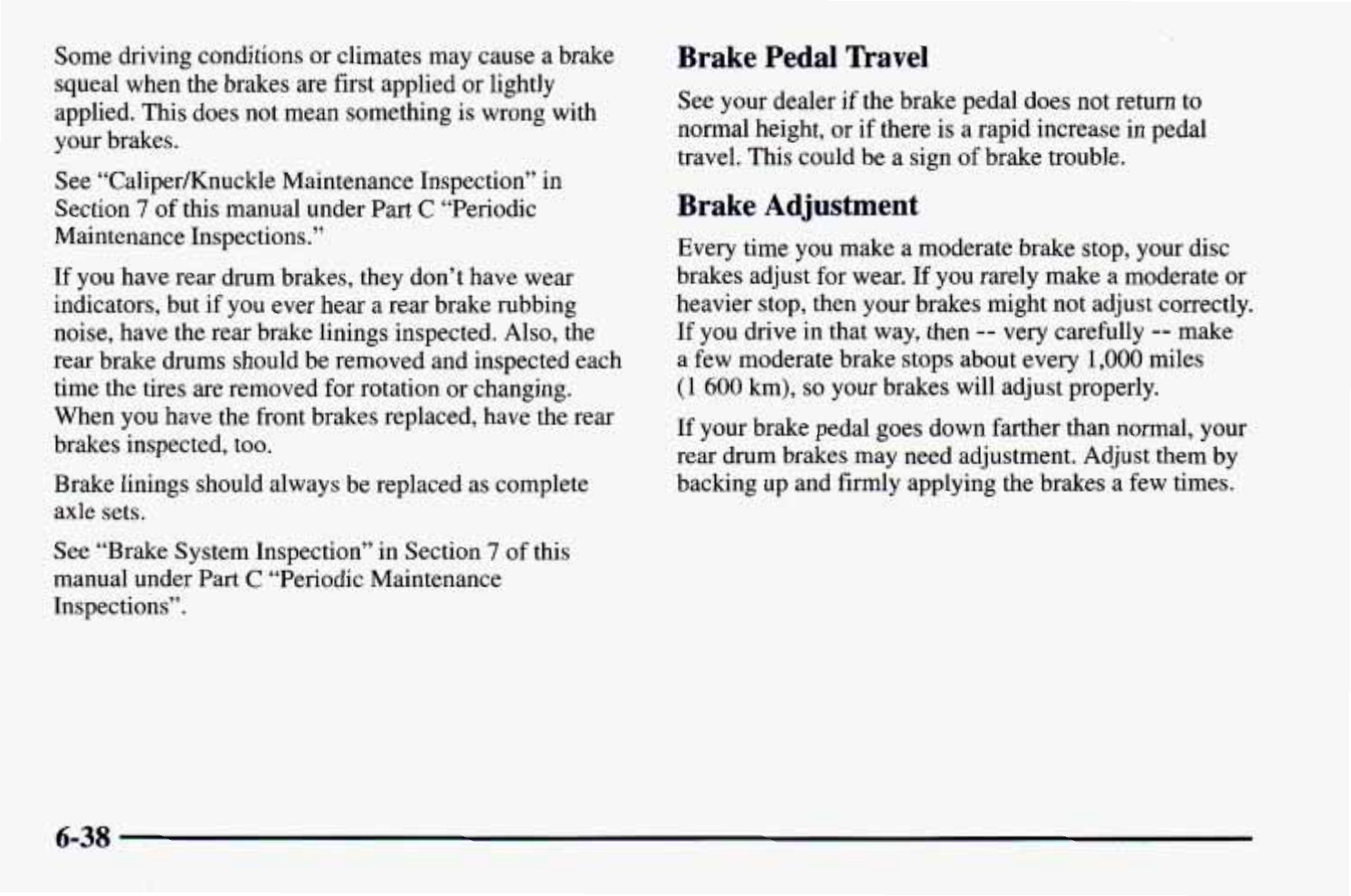
Some driving conditions or climates may cause a brake
squeal when the brakes are first applied
or
lightly
applied. This does not mean something is wrong with
your brakes.
See “Caliper/Knuckle Maintenance Inspection” in
Section
7
of this manual under Part
C
“Periodic
Maintenance Inspections.”
If you have rear drum brakes, they don’t have wear
indicators, but if you ever hear a rear brake rubbing
noise, have the rear brake linings inspected. Also, the
rear brake drums should be removed and inspected each
time the tires are removed for rotation or changing.
When
you
have the front brakes replaced, have the rear
brakes inspected, too.
Brake linings should always be replaced as complete
axle sets.
See “Brake System Inspection” in Section
7
of this
manual under Part
C
“Periodic Maintenance
Inspections”.
Brake Pedal Travel
See your dealer if the brake pedal does
not
return to
normal height, or if there is a rapid increase in pedal
travel. This could be a sign
of
brake trouble.
Brake Adjustment
Every time you make a moderate brake stop, your disc
brakes adjust for wear. If you rarely make a moderate or
heavier stop, then your brakes might not adjust correctly.
If you drive in that way, then
--
very carefully
--
make
a few moderate brake stops about every
1,000
miles
(1
600
km),
so
your brakes will adjust properly.
If your brake pedal goes down farther than normal, your
rear drum brakes may need adjustment. Adjust them by
backing up and firmly applying the brakes a few times.
6-38


















